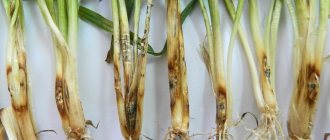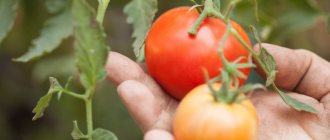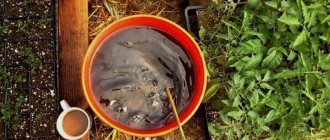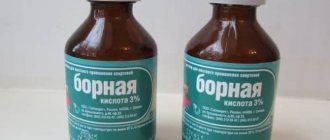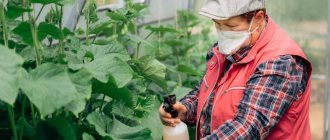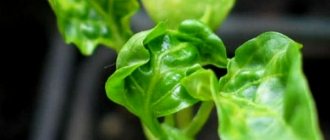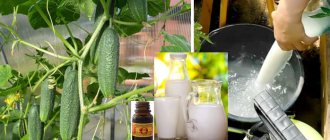Why do plants need iodine and boric acid?
First, let's figure out what effect iodine has on plants and, in particular, strawberries.
On the Internet you can find a large amount of information about the use of alcohol tincture of iodine; it is often described as almost a panacea for all ills:
- increases productivity, sweetness, size of berries;
- protects against fungal diseases;
- helps absorb nitrogen from the soil;
- Iodine is involved in the synthesis of proteins and amino acids and has antiseptic and antifungal properties. Its smell repels some harmful insects.
Composition of 100 ml alcohol tincture:
- 5 g iodine,
- 2 g potassium iodide,
- water and alcohol – 95%
The benefits and harms of iodine: evidence base
First of all, iodine is of interest because of its importance in human nutrition. Plant foods are one of the sources of this microelement in the body. There are few studies specifically on strawberries, but they exist.
Interestingly, some of the first studies on the effects of iodine were carried out back in 1930 at the Uman Agricultural Institute. It has been proven that foliar feeding and pre-sowing treatment with potassium iodide (KI) accelerate the development and enhance the immunity of various crops. Early ripening of vegetables and an increase in the content of carotene and other useful substances were noted.
Efimov M.V. and Shuin K.A. in their studies showed that iodine helps regulate plant enzyme systems. In addition, treatments with potassium iodide help increase yield.
Ermakov A.I. in 1952 he proved that the addition of potassium iodide increases the sucrose content in garden strawberries.
In 2012-14 At the Michurinsk State Agrarian University, research was carried out on the enrichment of various crops with iodine. According to the results, the increase in iodine content in garden strawberries on average over 3 years amounted to 369.4%.
It is important to know that the form of iodine absorbed by plants is iodine salts. They were also used in studies for root and foliar feeding, as well as pre-sowing treatment. In alcohol tincture of iodine, the content of potassium iodide is not high. From pharmaceutical products it is better to use Lugol's solution.
Treatment of strawberries with iodine against diseases and pests
Despite the fact that no research has been conducted on the use of iodine as a remedy for strawberry diseases, many gardeners claim that treating strawberries with iodine can actually prevent some diseases and even cure plants.
Experienced gardeners say that spraying with iodine will help with:
- brown spots on leaves,
- spots,
- other diseases caused by fungi.
Of course, if the spread of pathogens is insignificant or for prevention.
Iodine is combined with soap solution, milk or whey - apparently, lactic acid fungi can suppress pest fungi. We will provide recipes for the compositions below.
What about pests - treating strawberries with iodine will most likely simply scare them away for a while.
Possible harm
Despite the fact that alcohol tincture of iodine has been known to everyone since childhood, you should not take it lightly.
Iodine in this composition is a volatile and toxic substance.
Its vapors can cause irritation of the respiratory tract and mucous membranes, headaches, vomiting, and diarrhea. If the alcohol solution gets on the skin, burns and dermatitis may occur. Severe poisoning can result in death.
Be sure to remember the dangers of the drug and do not follow the advice to “hang jars of iodine in the greenhouse.” In addition, the evaporating substance has a destructive effect on polycarbonate.
Overdose of iodine in plants:
- decrease in yield,
- curling leaves,
- the shoots dry out, the buds fall off,
- possible burns on the leaves - brown spots.
Benefits of boric acid
Boron is an essential microelement for strawberries during active growth and fruiting. Boron fertilizing helps strengthen the plant’s immunity, as well as:
- promotes the absorption of calcium from soil and fertilizers;
- increases strawberry resistance to viral diseases and adverse weather conditions;
- accelerates the growth and development of young plants;
- promotes the formation of new flower buds.
Boric acid is the most accessible and inexpensive source of microelements for garden strawberries. The element is better absorbed by the plant from foliar feeding (spraying on the leaf) with a liquid solution.
Recipes for treating and fertilizing strawberries with iodine
So, we have dealt with the theoretical part. As we have already said, from the point of view of agrochemistry, it is better to use special fertilizers where iodine is in an assimilable form.
Table: iodine content in fertilizers
| Fertilizer | Iodine content |
| Ammonium sulfate | 0 – 350 |
| Calcium cyanamide | 10 – 40 |
| Superphosphate | 0 – 40200 |
| Thomasslag | 0 – 360 |
| Phosphorite flour | 150 – 280 000 |
| Potassium chloride | Traces – 30 |
| Potassium sulfate | Traces – 25 |
| Silvinite | 0 – 133 |
| Carnalite | 0 – 5000 |
| Cainite | 0 – 900 |
| Manure | 40 – 1000 |
| Peat | 1200 – 31700 |
| Peat ash | 800 – 9700 |
| Wood ash | 62 – 86 |
| Limestones | 0 – 20370 |
| Dolomites | 14 – 420 |
In April, when strawberry plants woke up from hibernation and began to grow, they need nitrogen. In spring, strawberries are fed:
- humus (scattering the product around the bushes, in the amount of 3-4 kg per 1 sq. m);
- a solution of chicken manure (1 kg of fertilizer per 15 liters of water);
- urea solution (1 tablespoon of powder per 10 liters of water).
Feeding strawberries with iodine in the spring helps absorb nitrogen from the proposed fertilizers and destroys pathogens in the soil. The dosage of the drug is 10 drops of alcohol tincture of iodine in a bucket of lukewarm water. The liquid is poured onto the ground around the plants, using 400-500 ml for each bush.
Attention! Use only freshly prepared iodine solution. As it is stored, its effectiveness decreases. The liquid is kept in a plastic container, metal is not used.
During the budding phase or during flowering, treating plant foliage with an aqueous solution of iodine will not only nourish the strawberries, but will also prevent fungal diseases. The iodine solution, settling on the leaves, forms a thin film that protects the plants from bacteria. The smell of iodine repels some flying pests, such as weevils.
The spray solution is prepared from the following ingredients:
- 10 liters of clean water;
- 10-15 drops of alcohol tincture of iodine;
- 1 tbsp. a spoonful of liquid soap (necessary for better adhesion of the solution to the leaves).
Plants are sprayed generously with freshly prepared solution in cloudy weather or in the evening. Try not to get liquid on open flowers and buds.
Before planting strawberry seedlings in the garden, it is useful to soak the entire bushes in a weak solution of iodine (3 drops per bucket of water) with the addition of potassium permanganate (a few crystals). This will serve as a prevention against fungal and bacterial diseases. It is enough to keep the plants in the solution for 20-30 minutes. After planting, you can spill the used liquid on the strawberry bed; there will be no harm from it.
Iodine is an important element of these three - ammonia boron iodine
Iodine is enough 4 drops per 10 liters. Water 3 days or a week after ammonia.
Iodine is a common, or rather dispersed, element everywhere; it is present in all biocenoses, in all natural objects around us: in every soil, in every living organism, and either those who are too ignorant and timid can talk about some kind of threatening deficiency people are either too cunning.
Theoretically, among garden plants, those that contain slightly more iodine can clearly respond to iodine: garlic, beets, potatoes, as well as fruit and berry crops, and primarily grapes.
These crops can be considered indicator plants for iodine and can be used to check the reaction to the application of iodine-containing fertilizers.
After all, in our review of microelements we are only talking about the possibilities of increasing fruiting: there will definitely be no harm from a one-time application of these preparations, and a surge in yield is very likely, although this is not one hundred percent. And the extra element in their collection - iodine - increases this probability.
It is found as a trace element in all natural fertilizers: compost, ash, manure, bird droppings...
The composition of compost can come from the remains of all seafood used for food (trimmings of fish fins, etc.), including sea kelp (it contains about 1% iodine, and in general this element was first discovered by chemists when studying the ash of sea coastal algae).
Iodine is also included in various complex liquid fertilizers: look for “I” on the package.
Procedure and recipes for fertilizing strawberries with boron
You can use boric acid to feed strawberries three times a season: in the spring, at the time of flowering and after fruiting.
Fertilizing strawberries in spring with boric acid is carried out in April. It is convenient to combine watering the bushes with fertilizer with the work of cleaning the strawberry plantation: removing old leaves, loosening the soil.
First feeding:
- To prepare, take 2 g of boric acid per 10 liters of water.
- You can enhance the nutritional and disinfecting effect of the solution by adding 2 g of potassium permanganate (potassium permanganate) and 1 cup of ash infusion.
Chlorinated tap water is not suitable for preparing fertilizer; the dissolved elements in it are inactive. Use water from a natural reservoir, rainwater or standing for 2 days.
The second feeding is carried out in June, on blooming strawberries. At this time, it is effective to spray on the foliage by dissolving 1 g of boric acid powder in a bucket of water.
The third time the strawberry plantation is treated with boron is carried out in the fall - in early September. At this time, it is useful to combine boron with ash - 2 g of boric acid and 2 cups of ash infusion (2 cups of wood ash are infused for 5 days in a bucket of water) per 10 liters of water. The solution is poured under the root of the plant, without getting on the foliage, using 500 ml for each bush.
Boric acid is a toxic substance! When working with it, you must adhere to the recommended proportions of adding the substance to the solution and use protective equipment - gloves, goggles, a mask.
Processing berries using potassium permanganate
Manganese is a well-known substance that has found application in various sectors of human activity, and especially in gardening. In particular, potassium permanganate for strawberries is not only an excellent preventive and antiseptic agent, but also the main weapon in the fight against diseases and pests, as well as an excellent fertilizer. Strawberries respond well to foliar feeding.
You need to fertilize the soil in stages. The first time you need to process young leaves. The best time for this is early spring. Spring feeding also involves applying the drug during the flowering period of strawberries. Watering strawberries should be done with manganese. When foliar spraying, try not to touch the inside of the leaf.
Potassium permanganate has truly universal properties regarding strawberries. Firstly, you can soak the seeds in it before planting them in open ground. To do this, you need to dilute potassium permanganate with water in a proportion of 0.5 grams of the substance per 100 milliliters of liquid. This will help rid the strawberries of bacteria that spend winter on the seeds and, during planting in the spring, stimulate the appearance of various diseases. How long to keep seeds in potassium permanganate? Approximately 20 minutes. Immediately after this, the seeds are thoroughly dried.
Gardeners also willingly share the secret of preparing fertilizer for strawberries for application in early spring. Mix potassium permanganate in a ratio of 3 grams of fertilizer per ten liters of water and supplement it with a pinch of boric acid. This feeding is especially suitable in early spring for areas with sandy soil. In order to save strawberries from gray rot, you need to treat them with the following fertilizer: stir two teaspoons of potassium permanganate (without a slide) in ten liters of water. It is recommended to spray strawberries with the preparation in the spring - after the end of the flowering period. However, you should not spray strawberries with potassium permanganate too often. After all, an excess of the substance in the soil can have a bad effect on the development of strawberries in the spring.
Don’t forget that manganese is an excellent treatment for gardening tools, as well as seedling boxes, greenhouses and greenhouses.
Recipes for feeding strawberries with additional ingredients
To combine the enrichment of soil with nutrients and the prevention of disease development, complex solutions are used.
| Solution | Recipe and application |
| 1 | For 10 liters of lukewarm water:
This solution is applied at the root, one glass per bush. |
| 2 | Barrel with a capacity of 50 l:
Fill with hot water to the top. After a week of infusion, the strained solution is diluted with clean water by half. Add 5 drops of iodine and 1 g of boric acid to a bucket of liquid; the resulting solution is poured under the strawberry root, 300-400 ml each. |
| 3 | For 10 liters of water take:
The solution is sprayed on strawberries during the bud filling phase. |
All solutions are used immediately after preparation.
